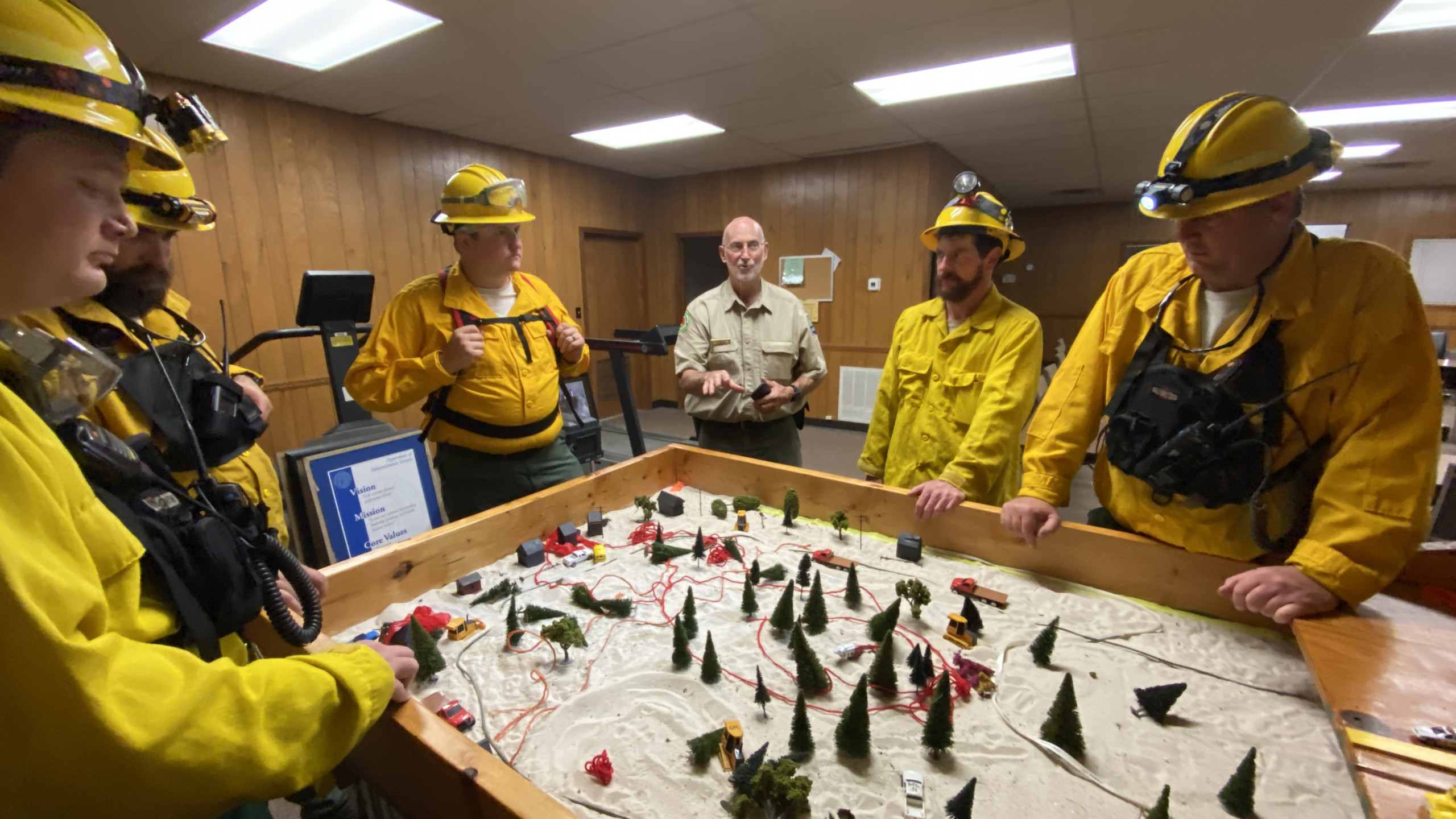
GFC Guest Blog:
2022 Spring-Summer Wildland Firefighter Academy
by our Multimedia Specialist and Videographer Meaghan Munoz-Dickson
As a videographer for the Georgia Forestry Commission, I help tell stories about the agency from in front of and behind the scenes. Wildfire training is arduous and specialized, and more clearly understood by participation than by filming on the sidelines. During the week of May 16, I learned firsthand what both rangers and foresters must be capable of before going out to fight fire in Georgia.
I was assigned to Squad 4, where I was only familiar with one other participant. At 0930 on Monday, we joined the rest of the cadre, where we got the daily weather report and our Incident Action Plan (IAP). These documents dictate everything we need to know for the day, from our mission objectives to evening exercises and radio communication settings. However, the most critical item needed is the “IRPG” or Incident Response Pocket Guide. It contains the requirements and guidelines a ranger must live by – the “10 Standard Firefighting Orders” and “18 Watch Out Situations.” We were instructed to study the IRPG as we were introduced to various situations and training topics throughout the week. By mid-afternoon, our instructors had covered basic wildfire terms, safety, and the tools used to determine and predict fire behavior. We transitioned to practical applications at night, which was the best part because we were able to use what we learned while in the classroom. Each day would follow suit with a few variations, depending on special guest speakers, weather conditions, and technical support.

If you are an extrovert like me, interacting with others while using critical thinking, problem-solving, and effective communication boosts comprehension and retention. During one of our exercises, we were presented with a wildfire scenario in a tabletop demonstration. Our objectives were to evaluate the situation and think of ways to mitigate the wildfire while protecting lives, homes, and property. This was a tricky situation, mandating our team work together and use critical thinking skills to solve the problems presented. As we maneuvered around the terrain, our instructors threw in new challenges, such as spot fires that jumped a firebreak. Wildland firefighters use plows to create man-made fire barriers, digging down to mineral soil. This helps contain a wildfire and prevent it from spreading further and becoming uncontrolled. We also must ensure that our squad and lives are kept safe in the process. Getting so close to the fire and seeing its volatility and power gave me new insight into how fragile and precious life is and why it is so important to protect. My own husband and son were on my mind and that really resonated with me. The primary purpose of this and all our operations at GFC is to return home safely to our families at the end of the day.


Every exercise built up to Thursday when we had to complete a prescribed burn and a wildfire scenario. At 0745, our cadre led a morning briefing, including our focus for the day, which was to successfully complete a handline or smaller firebreak using fire tools, using a drip torch to apply fire to further reduce vegetation that could become wildfire fuel, and identify various best management practices regarding water quality.

Then, it was time to load up and move out. This day’s activities would also prove to be one of the hardest challenges I’d ever had to face. Rangers usually prepare for this training months in advance, by taking the GFC Physical Agility Test. The test requires participants to:
- Pull and drag a tractor tire
- Carry buckets of water
- Use a fire rake
- Walk at a fast pace while carrying a wildfire pack and safety shelter
As someone who doesn’t actively fight wildfire, these activities really made me think of how important taking care of yourself is. It is just as important as taking care of others because it requires being at peak performance and being proactive to effectively serve as a first responder.
By the end of the week, I had a new appreciation for how much rangers go through day-to-day, which includes making critical decisions during intense and possibly fatal situations. Being able to cross-train as a wildland firefighter was a once-in-a-lifetime experience I will never forget. I met many people from different cultural backgrounds and heard their experiences out in the field. I am so grateful that these men and women participating in the Wildfire Academy are willing to put their lives on the line to protect our lives, property, and our precious forest resource.

Fantastic !! Very informative and loved the way you explained how it made you think.
I did not realize this was an organization outside of the fire department! Very well written and makes me want to train with the wildfire fighters for a week!